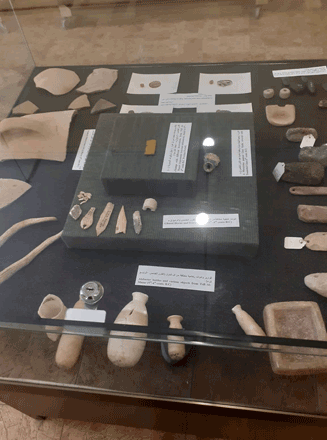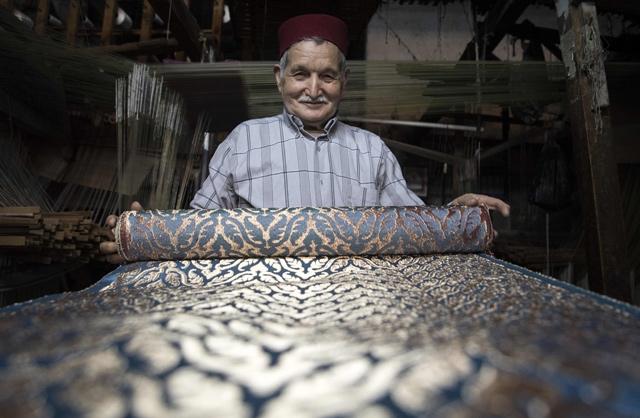You are here
Canadian scholar explores souvenir market pitfalls
By Saeb Rawashdeh - Jun 24,2023 - Last updated at Jun 24,2023

Artefacts displayed at The Archaeological Museum of The University of Jordan (Photo of Saeb Rawashdeh)
AMMAN — Tourists partaking in the Holy Land souvenir market base their willingness to purchase an artefact on more than just price as they look to its symbolic contribution as a sign of social status or empowerment of their religious faith, said a Canadian scholar.
Souvenir buyers can be roughly divided into two categories: Low-end and high-end, according to Morag Kersel from Chicago DePaul University, who for many years followed illicit trade of artefacts from the Middle East, Holy Land.
“Low-end buyers are typically backpackers, religious pilgrims, students and charter tourists to the area who want to leave with a small, inexpensive reminder or gift related to their trip. High-end buyers are traditionally wealthier individuals willing to make larger financial investments for the highest quality pieces,” said Kersel.
The archaeological artefacts being “consumed” can often be considered souvenirs, particularly those procured by low-end tourists, Kersel continued, adding that a souvenir functions as a memory, a remembrance and plays an integral part in a tourist experience.
Souvenirs, often commodities produced and sold in response to market demand, have been the subject of much research, particularly the tripartite relationship between tourism retailing, shopping habits and purchasing, she said.
“Elites almost always wish to remain anonymous in their purchases. They make up the bulk of the consumers buying from dealers who transact business from their homes. Elite consumers seek archaeological artefacts as a connection to the ancient past, but they rarely ask questions about archaeological find-spots. In this way they avoid any nasty associations with looters or illegal elements linked to the procurement of artefacts,” Kersel elaborated.
“In an ideal world I would like to see no looting, selling, or buying of artefacts, but, given the centuries-old lure of material from the Holy Land, it is unrealistic and naïve to think that a complete moratorium would ever succeed,” Kersel said.
Unfortunately, the influence of the high-end consumer, coupled with the potential revenue generation of the low-end tourist purchase, creates “the perfect setting for a legally sanctioned trade in antiquities to thrive”, she noted.
“Along with more effective legislation, regional cooperation and greater oversight at borders, we need better informed consumers who ask questions about the object’s archaeological find-spot and owner history and who know to ask for an export licence,” Kersel said.
Related Articles
At a sprawling Bronze Age cemetery in southern Jordan, archaeologists have developed a unique way of peering into the murky world of antiquities looting.
FES, Morocco — Abdelkader Ouazzani, the last of Morocco’s brocade master weavers, has been repeating the same gestures for 63 year
AMMAN — Besides the regional wars, another problem hindering the preservation of the Middle East’s cultural heritage is the illicit trade in



















